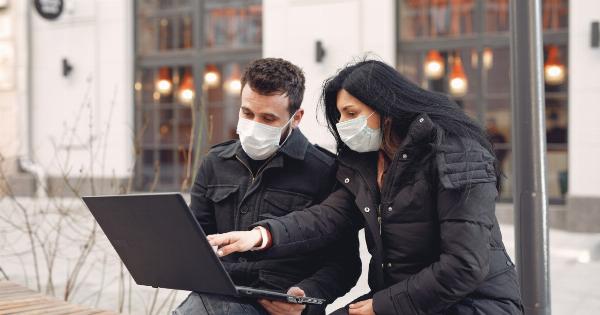Cold viruses are one of the most common causes of illness in humans. They can spread easily through the air or by direct contact with an infected person.
When there is a high concentration of cold viruses in the environment, the risk of getting infected increases significantly. In this article, we will explore illustrations that depict the high concentration of cold viruses and discuss the implications of such scenarios.
The impact of cold viruses on human health
Cold viruses can cause a range of symptoms, including sneezing, coughing, congestion, sore throat, and fever. These symptoms can be mild to severe, depending on the individual’s immune system and the specific virus strain.
In some cases, cold viruses can lead to more serious respiratory conditions such as pneumonia or bronchitis.
When there is a high concentration of cold viruses in the environment, such as during an outbreak or in crowded places, the chances of getting infected increase significantly.
Cold viruses can survive on surfaces and in the air for hours, making it easier for them to spread and infect individuals who come into contact with contaminated objects or breathe in infected respiratory droplets.
Illustrations depicting high concentration of cold viruses
To understand the impact of a high concentration of cold viruses, visual representations can be powerful tools. The following illustrations depict scenarios where cold viruses are highly concentrated:.
1. Crowded train station during flu season
An illustration showcasing a crowded train station during flu season, where people are coughing and sneezing without covering their mouths.
The air is filled with respiratory droplets containing cold viruses, increasing the risk of infection for individuals in close proximity.
2. Children in a school classroom
An illustration of a school classroom filled with children. Some children are visibly unwell, with runny noses and red eyes.
Cold viruses are circulating in the air as children interact closely, increasing the likelihood of transmission and potential outbreaks within the school community.
3. Office space without proper ventilation
An illustration depicting an office space with poor ventilation. Employees are working in close proximity to each other, and the air is stagnant.
Cold viruses released through coughing or sneezing remain suspended in the air, creating an environment conducive to the spread of infections.
4. Public transportation system during peak hours
An illustration showing a crowded bus or subway during peak hours. People are packed tightly together, and some individuals are visibly sick.
The enclosed environment increases the concentration of cold viruses in the air, making it easier for the viruses to be inhaled and transmitted to others.
5. Hospital waiting room
An illustration representing a hospital waiting room filled with patients. Some individuals have masks on, indicating respiratory symptoms.
The confined space and potentially compromised immune systems of the patients make it easier for the cold viruses to spread rapidly, posing a significant risk to others in the room.
6. Concert or stadium with a large audience
An illustration showcasing a concert or stadium filled with a large audience. People are cheering, singing, and interacting closely.
The concentration of cold viruses in the air increases due to the respiratory droplets released during these activities, potentially leading to widespread infections within the crowd.
The importance of precautionary measures
Given the significant risk posed by a high concentration of cold viruses, it is crucial to take precautionary measures to prevent infection. These measures include:.
1. Proper hand hygiene
Regularly washing hands with soap and water for at least 20 seconds or using hand sanitizers containing at least 60% alcohol can help reduce the risk of contracting and spreading cold viruses.
2. Covering mouth and nose
When coughing or sneezing, it is essential to cover the mouth and nose with a tissue or the inner elbow to prevent respiratory droplets containing cold viruses from becoming airborne and infecting others.
3. Avoiding close contact
Avoiding close contact with individuals who are visibly ill or experiencing cold-like symptoms can reduce the risk of exposure to a high concentration of cold viruses.
4. Maintaining good respiratory hygiene
Practicing good respiratory hygiene, such as using tissues or disposable wipes to clean nasal discharge, can help prevent the spread of cold viruses.
5. Ensuring proper ventilation
Proper ventilation in enclosed spaces, such as homes, offices, and public transportation, can help reduce the concentration of cold viruses in the air and minimize the risk of infection.
Conclusion
Visual illustrations depicting high concentrations of cold viruses can provide a clearer understanding of the potential risks and consequences associated with outbreaks or crowded environments.
By taking precautionary measures and practicing good hygiene, individuals can reduce their chances of getting infected and contribute to lowering the overall concentration of cold viruses in the environment.





























